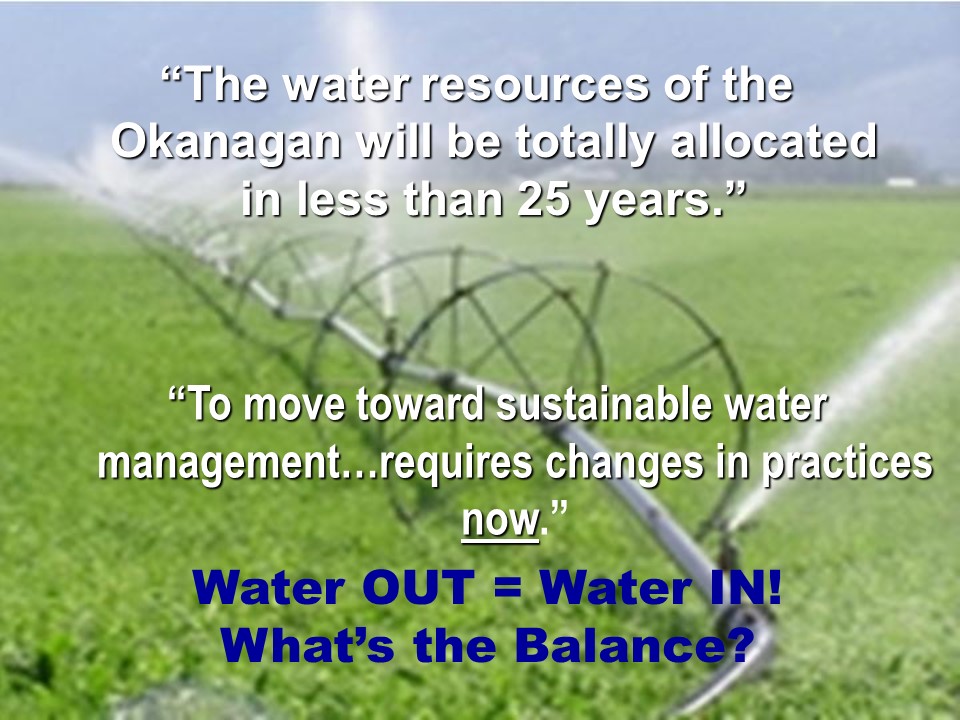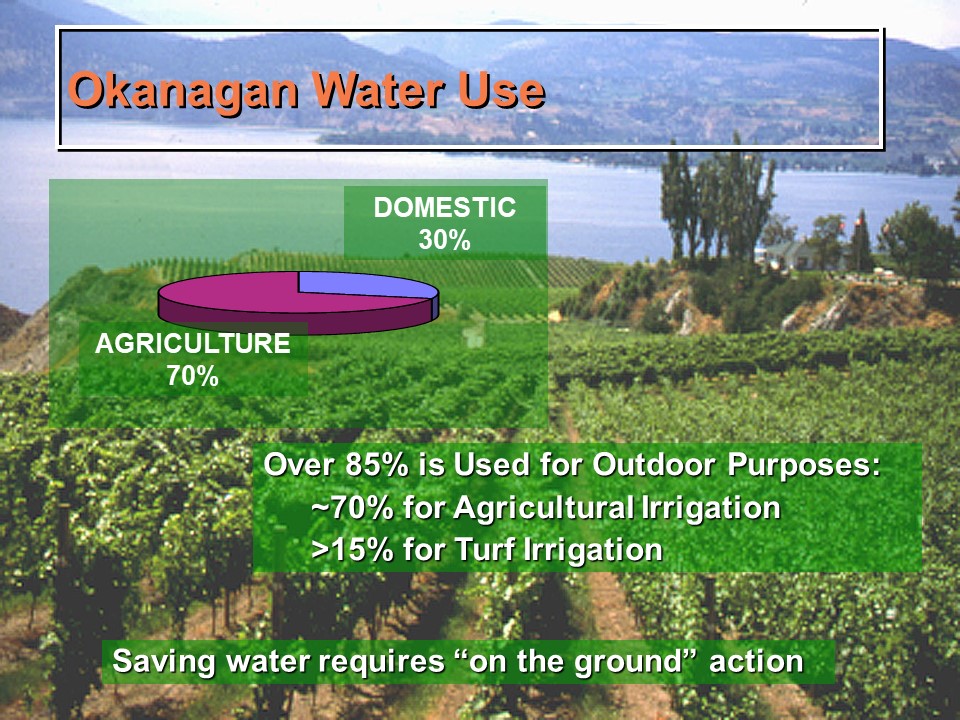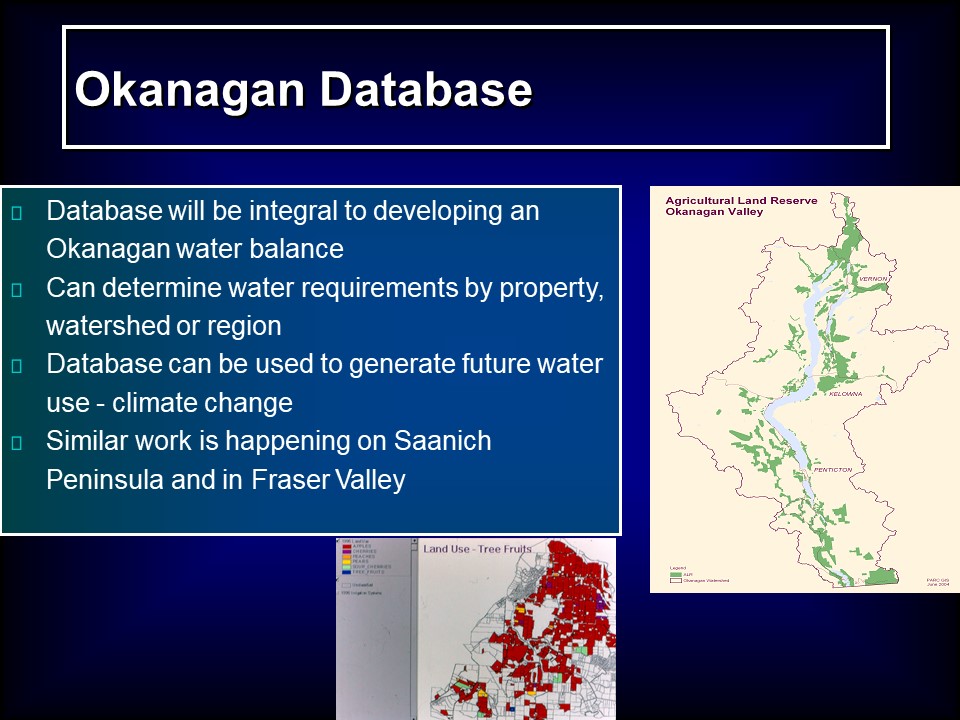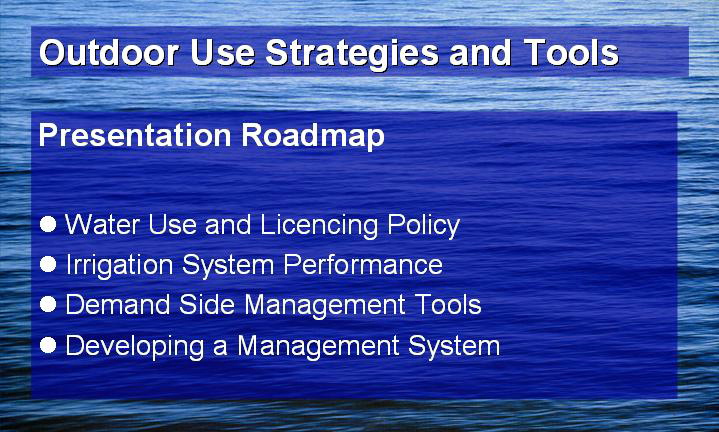ACHIEVING WATER BALANCE: “Water is the unifying element for growth management in the Okanagan,” stated Ted van der Gulik, Ministry of Agriculture, when he showcased new and emerging tools at the “Water OUT = Water IN” workshop that launched the Convening for Action in British Columbia initiative (April 2005)
NOTE TO READER:
The “Penticton Workshop” held as an adjunct to the BCWWA Annual Conference in April 2005 was the first regional event organized under the Convening for Action in British Columbia (CFA) umbrella, an element of the Water Sustainability Action Plan for British Columbia, released a year earlier in February 2004.
The workshop was titled “Demand Management Strategies – Achieving Water Balance” – A Workshop on Dealing with Uncertainty and Managing Risk.
This full-day technical transfer session connected the dots between water resource planning, climate variability and risk management; explored the tools and techniques available through demand-side management.


Outdoor Water Use – Achieving the Balance
In parts of the province, supply-side management cannot satisfy water demands. The presentation by Ted van der Gulik, Senior Engineer with the Ministry of Agriculture, Food & Fisheries, during the ‘working lunch’ elaborated on core principles, integrated strategies and practical tools for evolving the water management continuum: the vision is to use water savings to expand irrigated agricultural land bases and support population growth in the urban centres.
“ Water is the unifying element for growth management in the Okanagan,” stated Ted van der Gulik. “Agriculture is an integral part of the Okanagan fabric. It creates the ‘look-and-feel’ that is part of the Okanagan tourist experience, is an essential component of the Okanagan economic engine; and contributes to the provincial food supply. Therefore, saving water should be driven by incentives for the agricultural community.”
Water is the unifying element for growth management in the Okanagan,” stated Ted van der Gulik. “Agriculture is an integral part of the Okanagan fabric. It creates the ‘look-and-feel’ that is part of the Okanagan tourist experience, is an essential component of the Okanagan economic engine; and contributes to the provincial food supply. Therefore, saving water should be driven by incentives for the agricultural community.”
“In the Okanagan, over 85% of the total water supply is used for outdoor purposes in the urban and agricultural sectors. Because agricultural irrigation accounts for more than 70% of total water use, it is the key to an Okanagan Water Balance Strategy.”
To Learn More:
Download Ted’s presentation: Outdoor Water Use: Strategies and Tools for Achieving the Balance.






